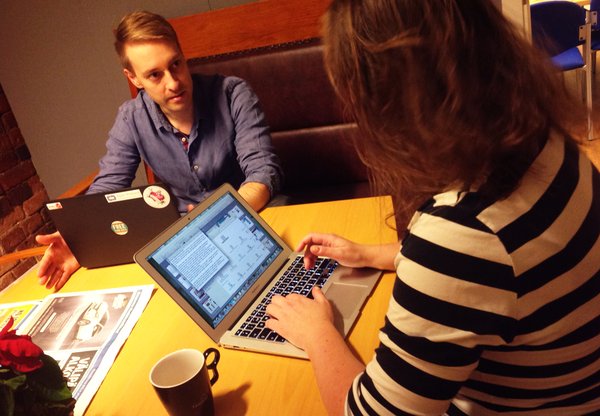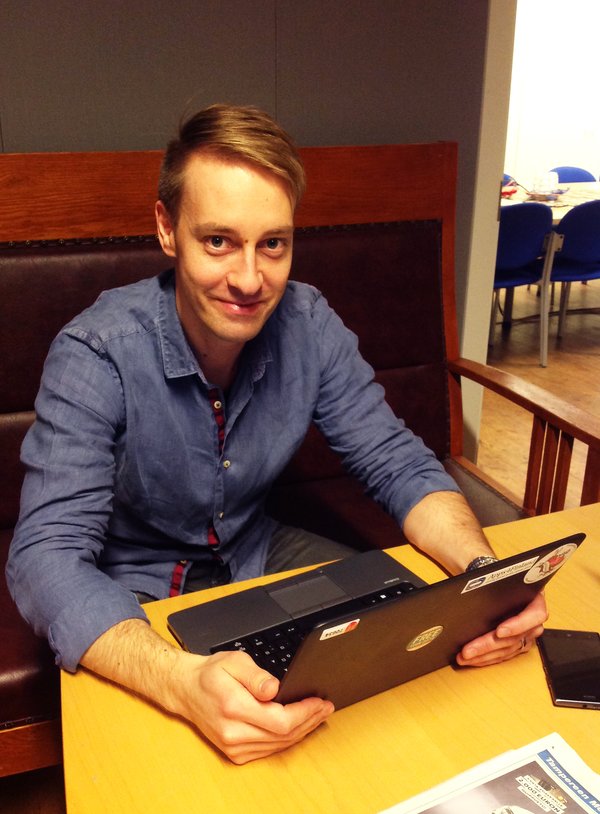Now is the time to open data up
24.2.2015
Data is raw material whose opening can produce new business and smart services that make everyday life easier. The open data key project of Finland’s six largest cities promotes the opening and utilisation of the cities’ data reserves. Tampere has been preparing the key project.
The city has diverse duties so that its residents can live, move about, take care of their everyday errands and enjoy their leisure time. At the same time, the city accumulates large volumes of data: location data, environmental data, traffic data, statistics and financial data. In the Open Data Key Project of 6Aika – Six City Strategy of Finland, the so-called Sixpack Cities open up their data reserves as widely as possible, for in today’s world data is a raw material for diverse opportunities.
– For example, Tampere justifies data opening by enabling everyone to brainstorm new applications and services based on it. This will generate needs oriented and agile solutions that would not necessarily be generated solely within the city’s organisation, says Open Data Development Manager Matti Saastamoinen from the Tampere Region Economic Development Agency Tredea.
The data raw material can be utilised by companies, research and educational institutes, organisations and individual application developers. The residents will benefit from applications making their everyday life easier. For example, a resident hurrying to the bus stop can check from his/her mobile phone when the next bus is coming and what its current location is.
– Opening up public transport data has already produced good applications for all mobile platforms, says Saastamoinen.

Now, the open data key project accelerates its operations to full speed. The goal is to generate basic actions within the Sixpack Cities to help data opening become part of normal city operations. The target group is formed by companies, since the project targets opening up data that the business life needs and is able to utilise.
– We are now striving to engage companies in active discussions so that we can gain information on companies’ data hopes and problems that could be solved by opening up data. On the other hand, the companies themselves may also have data whose opening could be beneficial.
In practice, companies are invited, for example, to developer meetings, networking events and competitions. Saastamoinen reminds that because the project has only just begun, this is the time for companies to express their hopes also regarding operating methods. Pilot projects by non-commercial actors will also be generated alongside the key project.
– The goal is to find new companies and other actors who utilise data, to create new research and development projects – and we practically beg for surprises, says Saastamoinen.
The open data key project’s background is formed by the Six City Strategy (6Aika) that Finland’s largest cities implement to progress together towards open and smart services. With their help, the city and its residents will be able to do things more quickly and easier so that using the new service has other benefits, besides the joy of newness.
– A dim electronic service is one that only copies the old service into an electronic tool. A smart service harnesses new possibilities, says Saastamoinen.
For example, in public transport this shows in the creation of different online schedule and route searches instead of just updating the PDF version of a schedule on paper. If the search also observes the user’s location and real-time traffic conditions or the weather, it starts to be pretty smart.
– The most worthwhile applications are often created by combining data from a different source, says Saastamoinen.
At Tredea, Saastamoinen works as a development manager in charge of open data and he co-ordinates the open data project of the Sixpack Cities. The current prospects seem very exciting.
– Now, the cities receive ample resource to open up data and, in addition, the cities are moving forward on this path together. So when one of the Sixpack Cities comes up with an idea, it shares it with the rest. I expect our collaboration to be very productive, says Saastamoinen.
Examples of open data applications:
- The Tampere location statistics (Tamperelaisen paikkatilasto) that enables comparing two or more locations in Tampere, which, for example, has more day care centres, schools, parks or even litter bins: http://paikkatilasto.herokuapp.com/
- City of Tampere Budget 2014: http://www.susten.fi/revontuli/tampere/
- Buses in real-time on the streets of Tampere in a 3D view: http://finland-3d.appspot.com/
- Public transport applications:
- Nysse, http://nysse.mobi/, Windows Phone
- Bussinavi, http://bussinavi.fi/, iOS
- Depart, https://play.google.com/store/apps/details?id=com.sekakuoro.depart, Android
- Industrial emissions on a map of the entire EU: http://paastot.fi
Open Data Key Project of 6Aika – Six City Strategy of Finland
is a strategy for sustainable urban development carried out by the largest cities in Finland, the so-called Sixpack Cities: Helsinki, Espoo, Vantaa, Tampere, Turku and Oulu.
The strategy has three focus points:
- open innovation platforms
- open data and interfaces
- and open participation.
The open data key project promotes opening up the data reserves of the Sixpack Cities in 2014–2017. The City of Tampere has prepared and applied for the key project while Tampere Region Economic Development Agency Tredea is in charge of its co-ordination.
Contact information:
Matti Saastamoinen
Development Manager, Open Data
Tampere Region Economic Development Agency Tredea
matti.saastamoinen(at)tredea.fi
tel. +358 40 820 4610